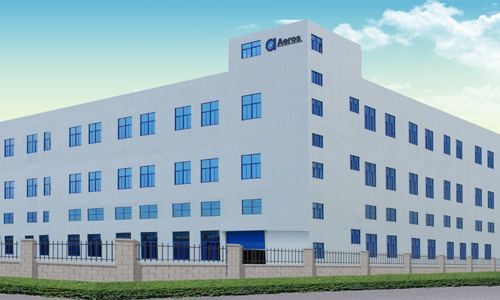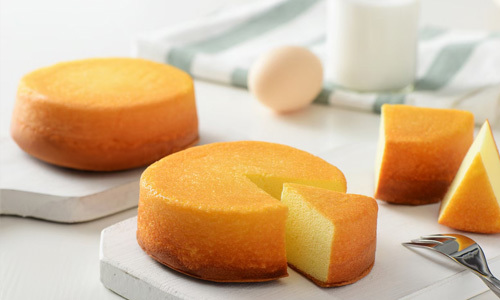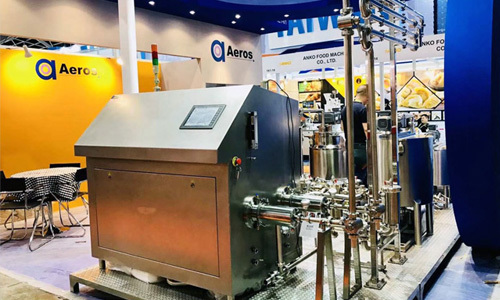Understanding the Chiffon Cake Aeration System: Key to Perfect Texture

2024/09/29
Chiffon cake, celebrated for its airy and delicate texture, relies heavily on a sophisticated aeration system during its production. This system plays a critical role in ensuring that the cake rises properly, resulting in the soft, moist crumb that is characteristic of chiffon cakes. To achieve this ideal texture, it is essential to grasp how the aeration process works and the key components involved in the manufacturing of chiffon cakes.
At its core, the aeration system involves incorporating air into the batter through various methods. The primary technique used in chiffon cake production is the beating of egg whites. When egg whites are whipped, they trap air bubbles, which expand during baking, giving the cake its lift. This process is further enhanced by the inclusion of chemical leavening agents, such as baking powder, that react when exposed to moisture and heat, producing carbon dioxide gas. These two methods combined create a synergistic effect that results in superior aeration and texture.
In addition to the whipping and leavening processes, the formulation of the batter itself is also critical in influencing the efficiency of the aeration system. The balance of ingredients – including flour, sugar, oil, and liquid – must be carefully managed to promote optimal air retention. For instance, the use of cake flour, which has a lower protein content than all-purpose flour, can contribute to a more tender crumb, allowing the air bubbles to remain intact throughout baking.
Another vital aspect of the chiffon cake aeration system is the mixing technique. It is crucial to incorporate the ingredients gently after the egg whites have been whipped to avoid deflating the batter. Techniques such as folding are often employed to combine the whipped egg whites with the yolk mixture, ensuring that the air pockets created during whipping are preserved, leading to a light and fluffy final product.
Moreover, the design of the manufacturing equipment used in the production line can influence the effectiveness of the aeration system. Equipment that allows for precise control over mixing speeds and times can significantly enhance the aeration process. Manufacturers often invest in specialized machinery to ensure consistency in product quality and texture.
In conclusion, the chiffon cake aeration system is a vital component in producing the delicate texture that these cakes are known for. By understanding the principles of aeration and the factors that contribute to it, food manufacturers can produce chiffon cakes that not only meet but exceed consumer expectations. By optimizing the aeration process, you can elevate your baking to new heights, ensuring that every chiffon cake is a masterpiece of lightness and flavor.
At its core, the aeration system involves incorporating air into the batter through various methods. The primary technique used in chiffon cake production is the beating of egg whites. When egg whites are whipped, they trap air bubbles, which expand during baking, giving the cake its lift. This process is further enhanced by the inclusion of chemical leavening agents, such as baking powder, that react when exposed to moisture and heat, producing carbon dioxide gas. These two methods combined create a synergistic effect that results in superior aeration and texture.
In addition to the whipping and leavening processes, the formulation of the batter itself is also critical in influencing the efficiency of the aeration system. The balance of ingredients – including flour, sugar, oil, and liquid – must be carefully managed to promote optimal air retention. For instance, the use of cake flour, which has a lower protein content than all-purpose flour, can contribute to a more tender crumb, allowing the air bubbles to remain intact throughout baking.
Another vital aspect of the chiffon cake aeration system is the mixing technique. It is crucial to incorporate the ingredients gently after the egg whites have been whipped to avoid deflating the batter. Techniques such as folding are often employed to combine the whipped egg whites with the yolk mixture, ensuring that the air pockets created during whipping are preserved, leading to a light and fluffy final product.
Moreover, the design of the manufacturing equipment used in the production line can influence the effectiveness of the aeration system. Equipment that allows for precise control over mixing speeds and times can significantly enhance the aeration process. Manufacturers often invest in specialized machinery to ensure consistency in product quality and texture.
In conclusion, the chiffon cake aeration system is a vital component in producing the delicate texture that these cakes are known for. By understanding the principles of aeration and the factors that contribute to it, food manufacturers can produce chiffon cakes that not only meet but exceed consumer expectations. By optimizing the aeration process, you can elevate your baking to new heights, ensuring that every chiffon cake is a masterpiece of lightness and flavor.
Chiffon cake aeration system







